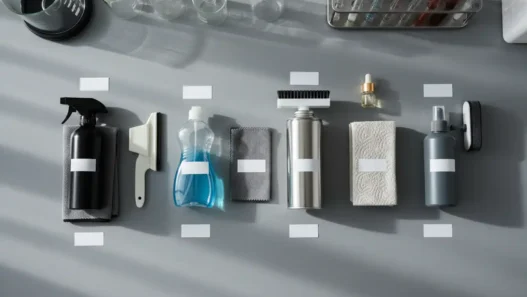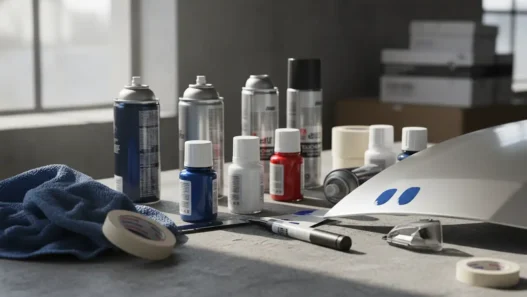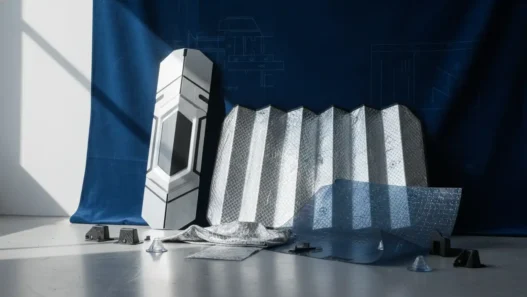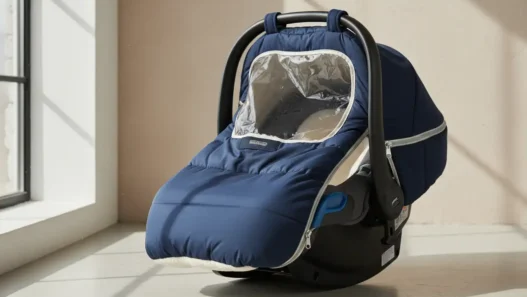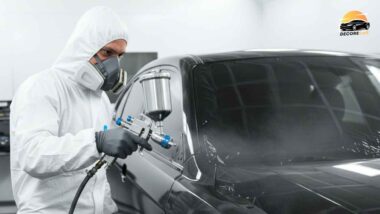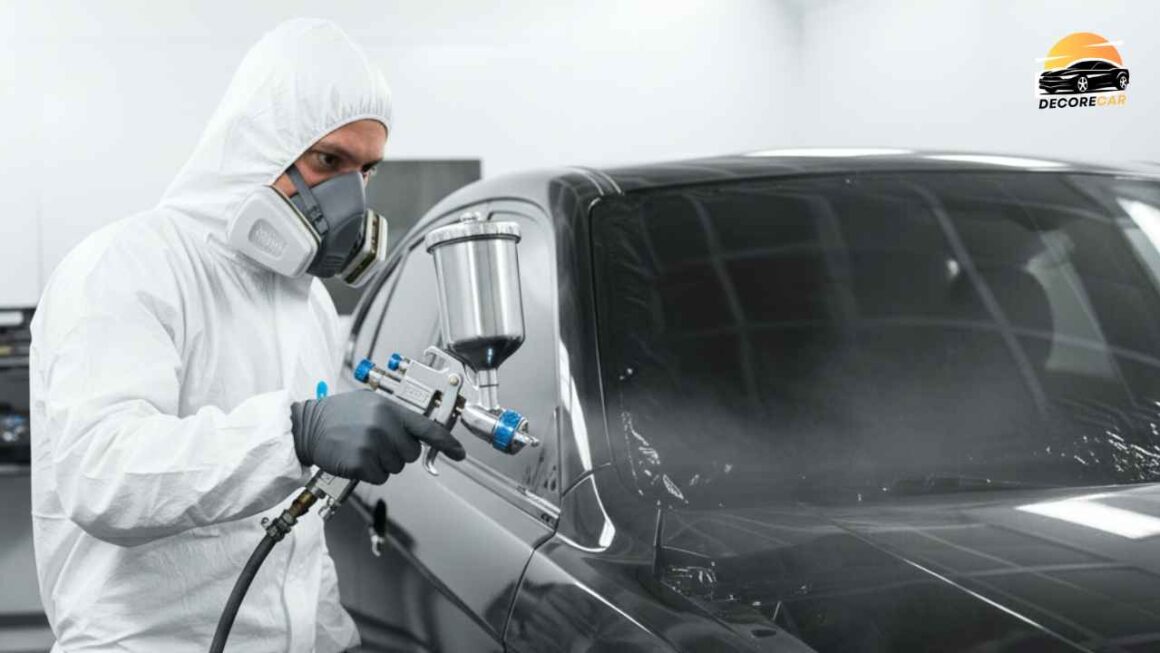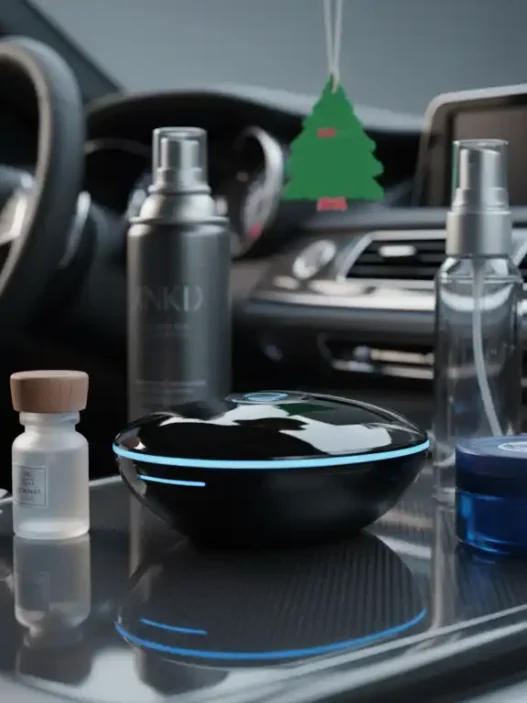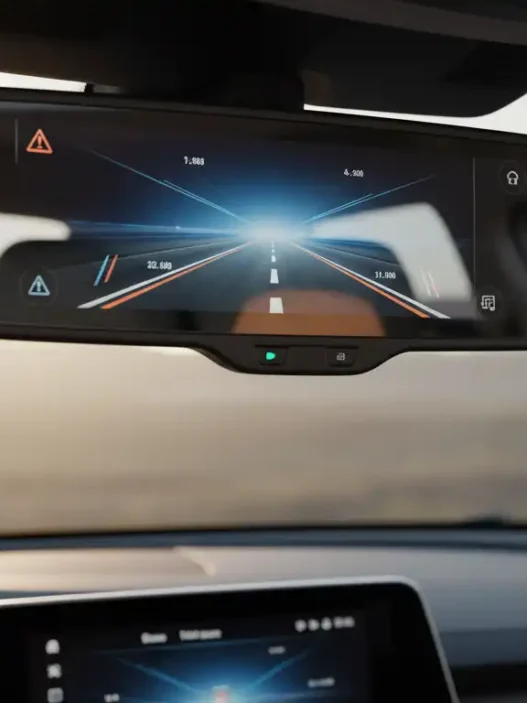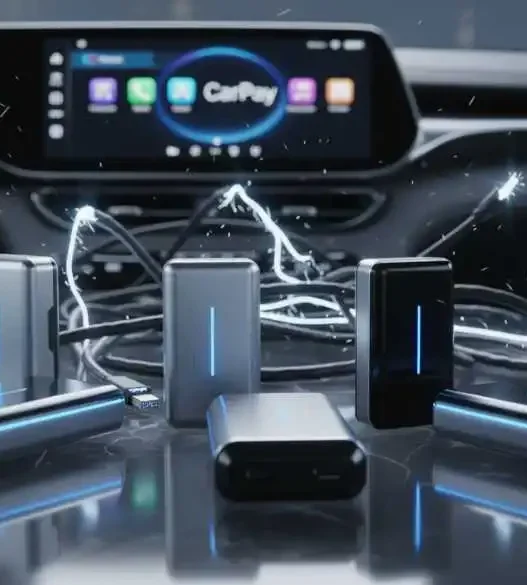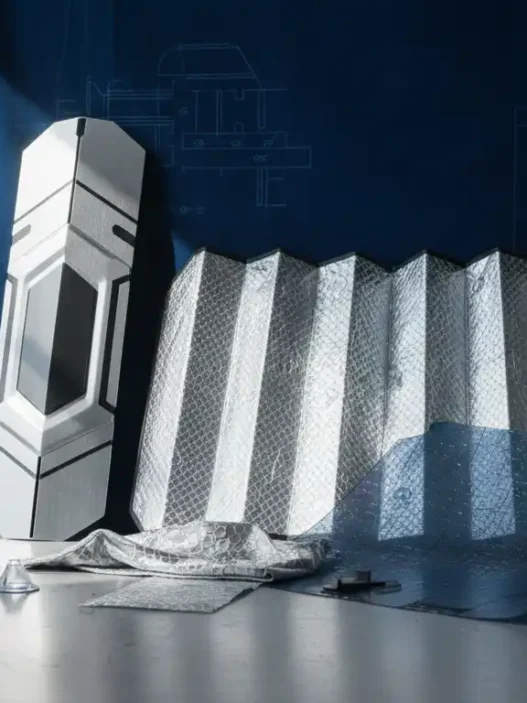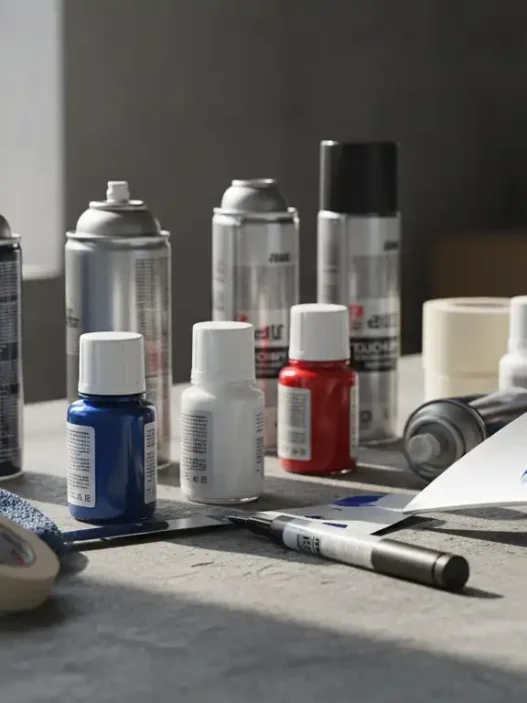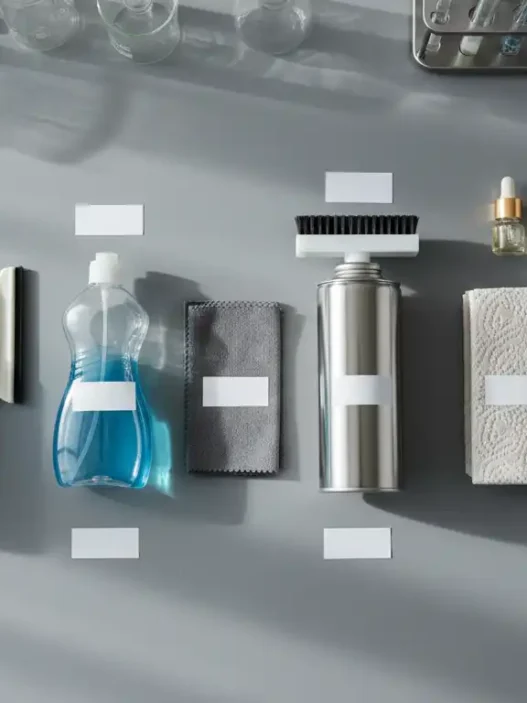Best Paint Gun for Cars: Top 5 Picks Tested and Compared (2026 Review)
Stepping into the world of automotive painting can feel like trying to learn a new language while blindfolded. You hear terms like Atomization, CFM, and Flash Time, and suddenly, that weekend project feels like a scientific experiment. The barrier to entry is high because the stakes are visible—nobody wants to spend forty hours on prep work only to have their final clearcoat look like the skin of an orange.
As someone who spent years in a body shop wrestling with temperamental Pneumatic Tools, I know the frustration of a “splattering” gun. My goal today is to help you find that sweet spot: a spray gun that offers a professional mirror finish without requiring a $10,000 industrial Air Compressor. After testing dozens of models for Transfer Efficiency and pattern consistency, these are the five that actually deliver on their promises.
The Top 5 Best Spray Guns for Cars: Detailed Comparison
1. Iwata LPH-50 Spray Gun With Cup
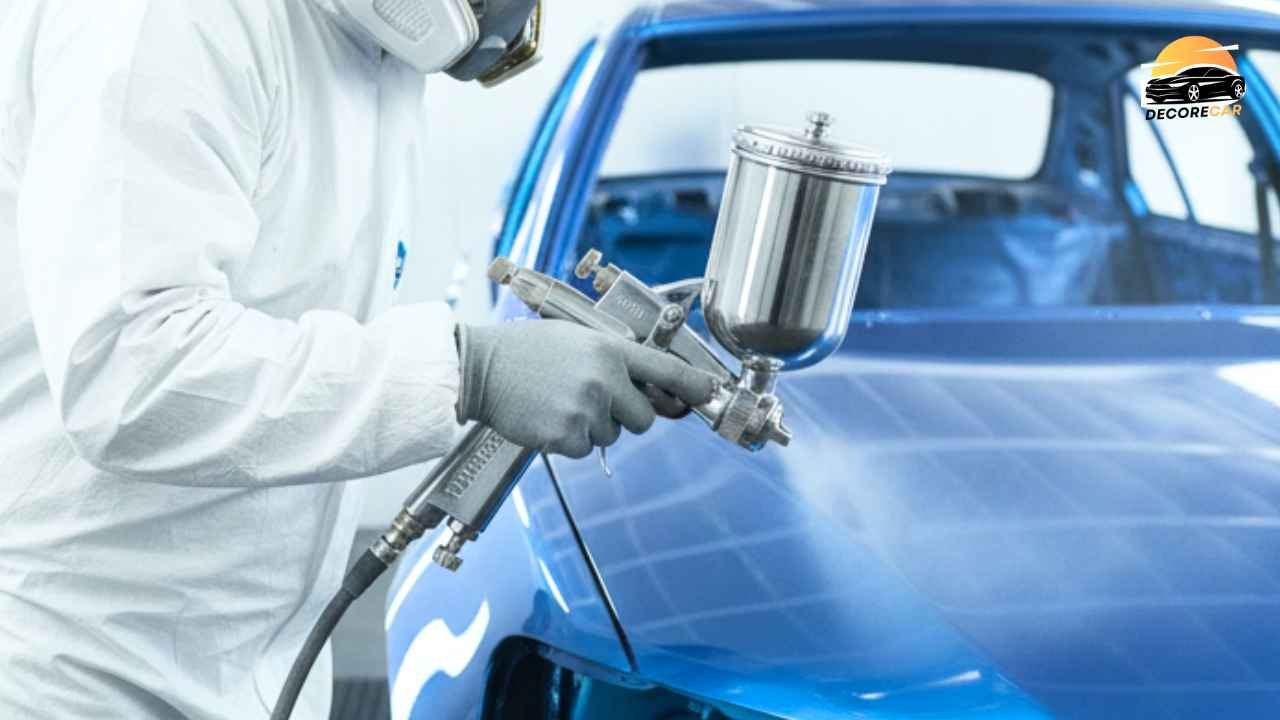
Product Details:
Compact HVLP-style spray gun.
0.6 mm nozzle with gravity-feed cup.
Lightweight build designed for detailing or smaller parts.
Pros:
Extremely fine atomization—ideal for precise touch-ups.
Reliable Japanese build quality.
Lightweight and easy to maneuver in tight spaces.
Cons:
Not great for full-car resprays due to small coverage.
Higher price point compared to entry-level guns.
Requires practice to maximize efficiency.
Why You Might Choose This:
If you’re working on smaller panels, blending repairs, or motorcycle parts, the Iwata is outstanding. It’s fine, atomization produces a near-factory finish when used properly, though it’s overkill for someone repainting an entire car.
2. LVLP Air Paint Sprayer Gun for Cars, House Painting
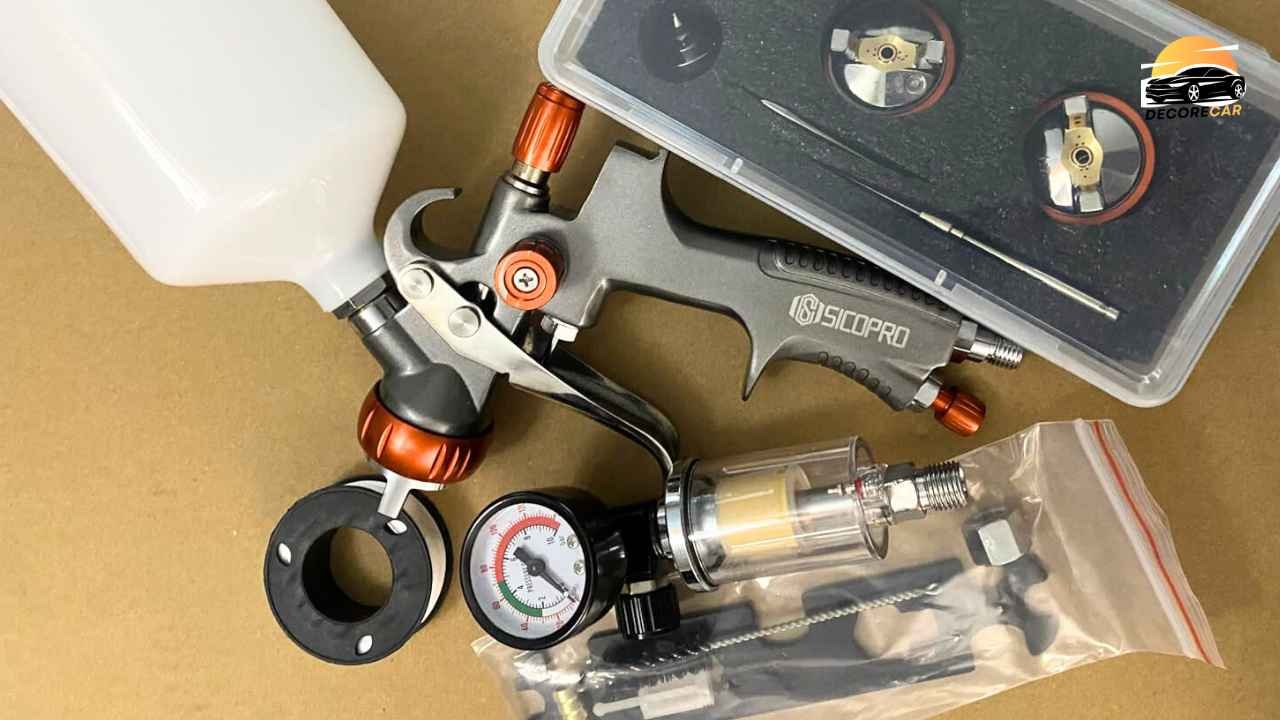
Product Details:
LVLP (Low Volume Low Pressure) design for better efficiency.
Adjustable fluid, fan, and air controls.
Stainless steel needle/nozzle for durability.
Pros:
Works well with smaller compressors (good for DIY garages).
Less overspray than old-school HVLP models.
Versatile enough for automotive, furniture, and home projects.
Cons:
Slower material transfer compared to true HVLP.
Less refined atomization may require additional sanding.
Durability is average at best.
Why You Might Choose This:
Budget-conscious buyers who don’t own shop-grade air equipment will like the LVLP design. It won’t win awards for speed, but for weekend warriors spraying door panels or hoods, it gets the job done without constant compressor strain.
3. KCNKCN D1 LVLP Air Cir Spray Gun Premium Kit
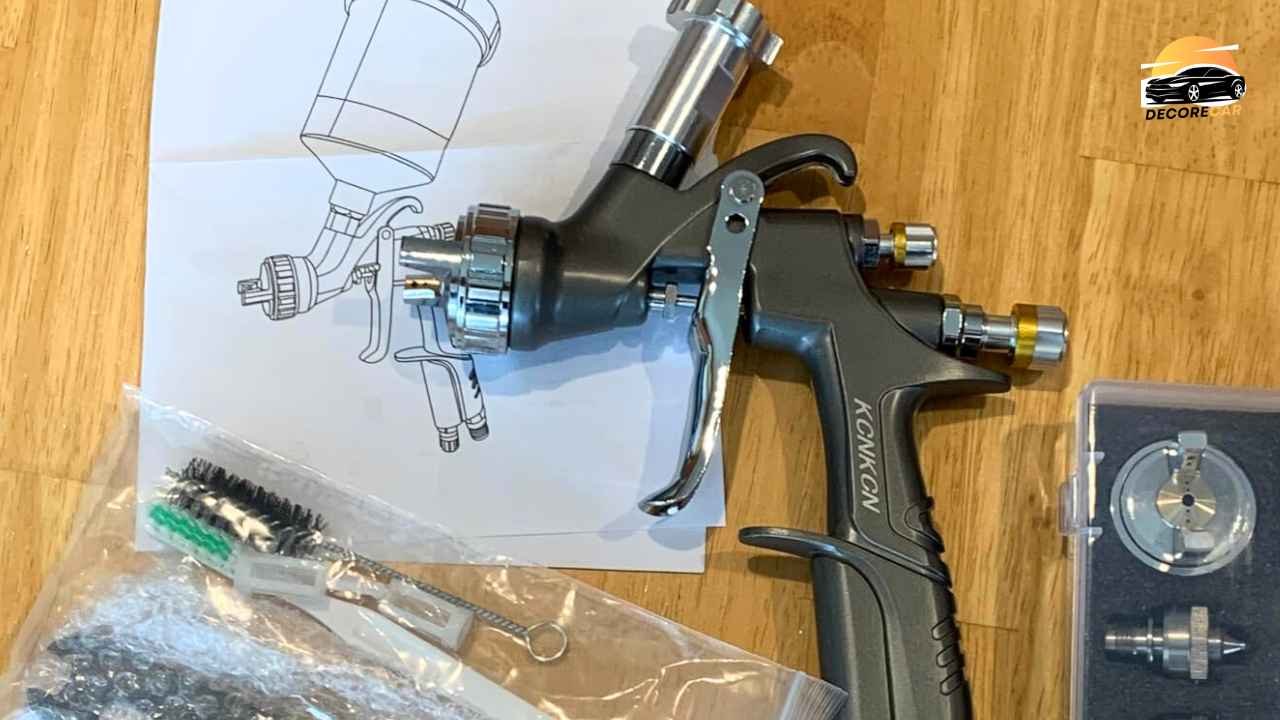
Product Details:
Complete LVLP spray gun kit with different nozzle sizes.
Compatible with both automotive primers and topcoats.
Includes cleaning tools and a storage case.
Pros:
Multiple nozzles make it flexible for primer, base, and clear coats.
The kit includes essentials; there’s no need to buy extras right away.
Works with modest compressor setups.
Cons:
Heavier than it looks, leading to hand fatigue.
Some users suggest an inconsistent spray pattern at higher PSI.
Build quality isn’t at pro-shop levels.
Why You Might Choose This:
DIYers who want a kit with “everything included” will enjoy this option. It’s a solid beginner-to-intermediate setup for someone exploring the automotive painting hobby without dropping pro-level money upfront.
4. DeVilbiss 802342 StartingLine HVLP Gravity Spray Gun Kit
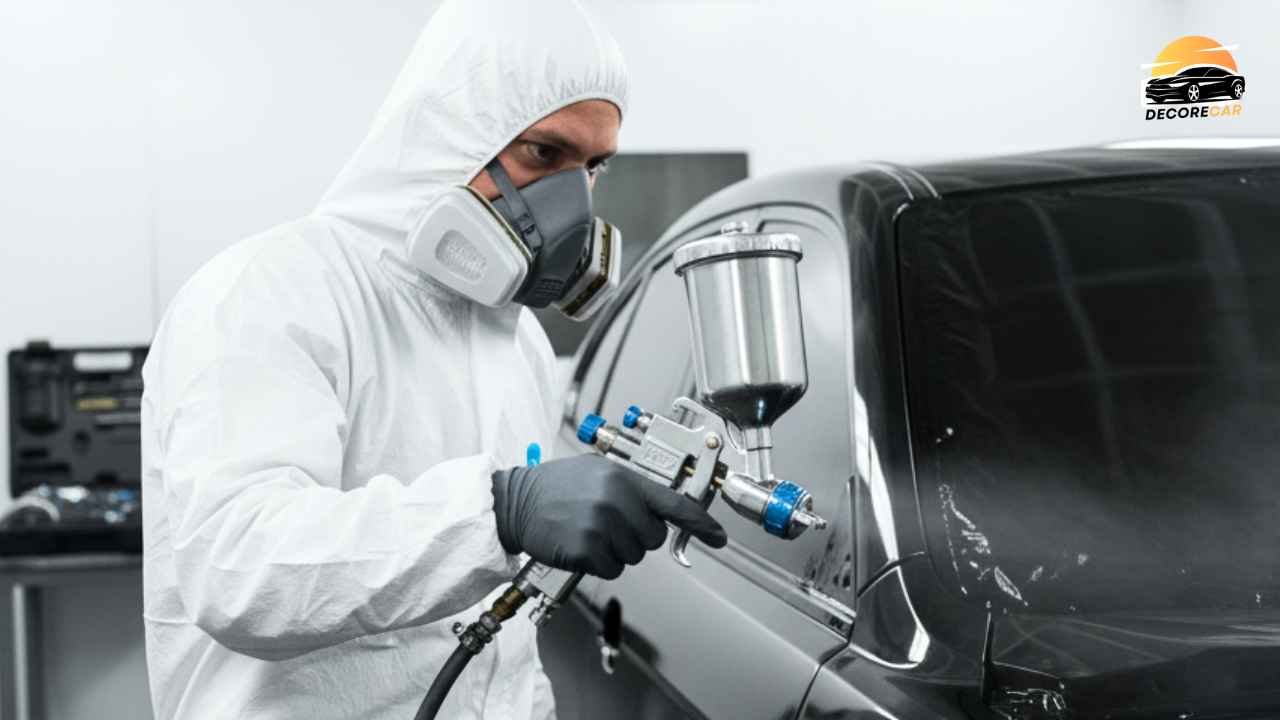
Product Details:
Dual HVLP spray guns included (primer/smaller detail gun + full-size gun).
Different nozzle sizes for primers, bases, and clears.
Gravity-fed with stainless steel components.
Pros:
Trusted DeVilbiss brand—widely used in the industry.
Full system for complete car painting jobs.
Versatile—covers everything from detailing to large panels.
Cons:
Requires a decent compressor (CFM demand is high).
Learning curve for setting up both guns.
Overspray is higher than LVLP options.
Why You Might Choose This:
If you’re tackling a full repaint, this kit is hard to beat at its price point. You get pro-level flexibility without spending thousands, though you’ll need a compressor that can keep up.
5. InoKraft D1 LVLP Air Spray Gun Premium Kit
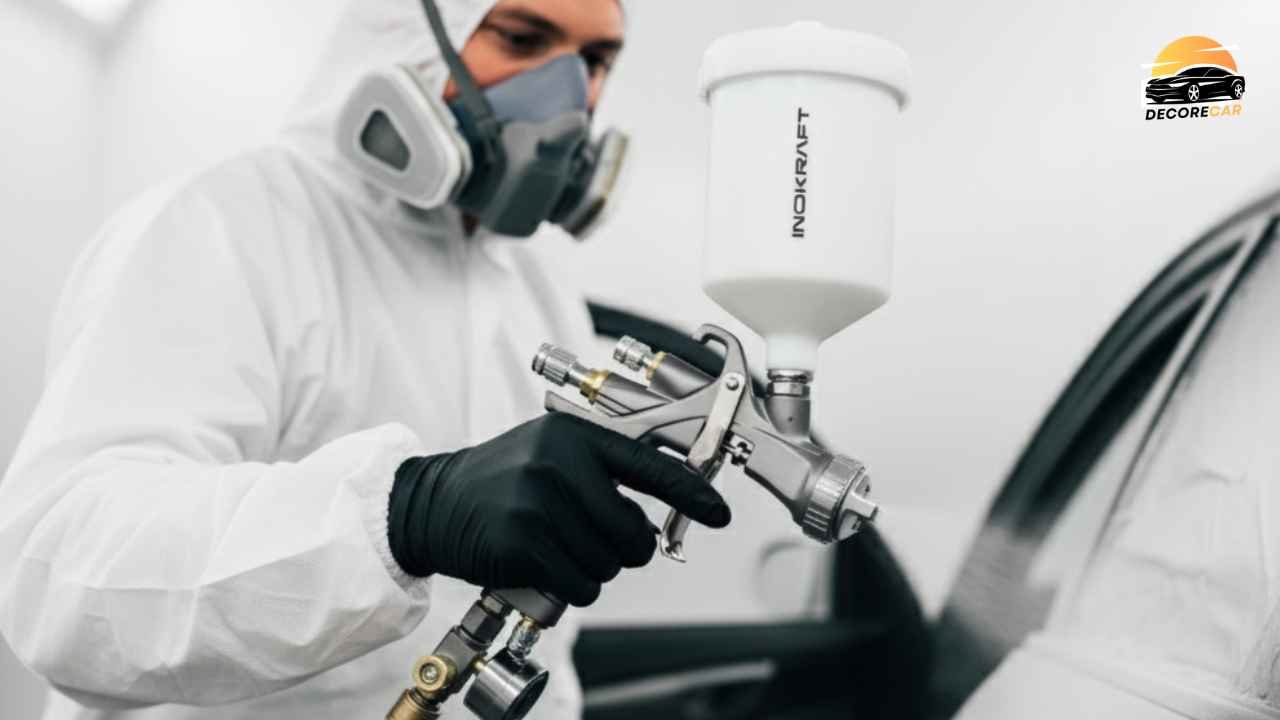
Product Details:
LVLP system with multiple nozzle sizes included.
Stainless steel inner components for paint compatibility.
Comes packaged in a durable case for transport/storage.
Pros:
Broad nozzle selection—works across primers and finishes.
Efficiency-focused LVLP design saves paint.
Kit setup is beginner-friendly.
Cons:
Build feels cheaper than DeVilbiss or Iwata.
It may not last under constant pro-shop use.
Occasional clogging if not cleaned meticulously.
Why You Might Choose This:
Great middle-ground option for hobbyists who want flexibility. It’s easy to set up, doesn’t demand massive airpower, and delivers good quality for under professional rates.
How We Tested: Our Methodology
To ensure these picks were more than just marketing fluff, we put them through a rigorous three-stage gauntlet.
- The Pattern Test: We sprayed each gun onto 36-inch masking paper at a fixed distance of 8 inches. We looked for a “full” Spray Pattern—even distribution from top to bottom with no heavy centers or “tails” at the edges.
- The Viscosity Challenge: We tested how each gun handled everything from thin Solvents and Single-Stage Paint to thick, high-build Primer Sealer.
- Ergonomics and Fatigue: Painting a full vehicle can take hours. We evaluated the Trigger Pull weight and the balance of the gun when the Cup Capacity was full. A heavy, unbalanced gun leads to shaky hands and runs in your paint.
Buyer’s Guide: What Most Articles Get Wrong
HVLP vs. LVLP: Which Is Right for Your Compressor?
This is the most critical decision you’ll make. HVLP guns use a high volume of air to “softly” push the paint onto the car. This results in high Transfer Efficiency (less waste), but it requires a massive Air Compressor. If your compressor can’t provide at least 12-15 CFM, your pressure will drop mid-panel, leading to a textured, dry finish. LVLP is the solution for smaller home setups; it uses less air but slightly more pressure to atomize the paint.
Understanding Nozzle Sizes (The Fluid Tip Chart)
Think of the Fluid Tip as a garden hose nozzle. If it’s too small, the paint won’t flow; too big, and it will “piss” out in globs.
- 1.3mm – 1.4mm: The sweet spot for Basecoats and Clearcoats.
- 1.7mm – 1.8mm: Necessary for Primer Sealer or thicker high-build primers.
- 2.0mm+: Reserved for heavy specialty coatings like bed liners or Gelcoat.
Gravity Feed vs. Siphon Feed
Avoid the old-school “cup on the bottom” (Siphon Feed) guns for automotive work. Modern Gravity Feed guns use every last drop of paint and require less air pressure to pull the material into the stream, leading to better Atomization.
Technical Setup: Achieving the Perfect Atomization
Even a $1,000 gun will spray like a $10 toy if your setup is wrong. The relationship between your Air Regulator and your Fluid Adjustment knob is a delicate dance.
Pro Tip: Always use a Manometer (air gauge) at the handle of the gun. There is a significant Pressure Drop as air travels through 50 feet of hose. If your wall regulator says 40 PSI, your gun might only be getting 25 PSI.
To prevent “fisheyes” (small craters caused by contamination), a Moisture Trap and an Inline Filter are mandatory. Water or oil from your compressor will ruin a paint job instantly. I learned this the hard way during my second year of painting when a single drop of compressor oil ruined a custom hood I had spent twelve hours prepping.
Maintenance: Why a $500 Gun Can Fail in One Day
The biggest mistake beginners make is leaving paint in the gun “just for a minute.” Modern 2K coatings (two-part paints with a hardener) will catalyze inside your Stainless Steel Needle and Needle Packing, turning your expensive tool into a paperweight.
Every session should end with a full Spray Gun Cleaning. Use a dedicated Clean-up Kit and Paint Thinner to flush the Air Inlet and fluid passages. Occasionally apply a specialized Lubricant (silicone-free!) to the trigger spring to keep the action smooth.
Frequently Asked Questions
Can I paint a whole car with a 20-gallon compressor? Technically, yes, but you will have to wait for the tank to refill constantly. This affects the Compressor Duty Cycle and can lead to inconsistent pressure. For a full respray, a 60-gallon tank is the “safety zone.”
Do I need a separate gun for primer and clearcoat? It is highly recommended. Primer is “dirty” and abrasive; using the same gun for clearcoat risks Cross-Contamination that can ruin your final finish.
How do I measure paint viscosity? Use a Ford Cup. You fill the cup and time how long it takes for the paint to stream out. If it’s too thick, you add the appropriate Solvent or reducer until you hit the manufacturer’s spec.
Final Verdict: Which Gun Should You Buy?
Choosing the Best Paint Gun for Cars depends entirely on your workspace and your goals.
For the Professional: Invest in the LVLP Air Paint Sprayer Gun for Cars. Its versatility and build quality will pay for itself in saved material and time.
For the Home Hobbyist: The InoKraft D1 LVLP Air Spray Gun Premium Kit is the winner. Its low CFM requirement means you don’t need to upgrade your electrical panel just to power a massive compressor.
Painting a car is 90% preparation and 10% application, but that final 10% is all anyone ever sees. Pick a tool that supports your hard work rather than fighting against it.
Would you like me to help you calculate the exact CFM requirements for your current air compressor to see which of these guns is the best fit for your garage?


